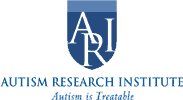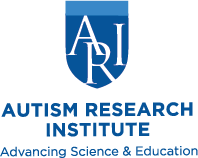Stephen Shore, Ed.D., recounts his experiences with autism and discusses the support systems that helped him transition to adulthood and independence. He describes the ability-based approach and uses anecdotal stories to portray its potential for assisting with transitions and overall quality of life. Shore presents suggestions to help individuals find what and how to disclose and underscores the importance of finding strengths by looking at personal interests. The speaker notes difficulties in sexual experiences and education for youth with autism and reiterates the importance of self-advocacy, especially during and after the pandemic. He closes with a question-and-answer session.
Due to technical limitations, the sound recording occurred via telephone during this presentation.
Handouts are online (.pdf format) HERE
Take the knowledge quiz HERE
In this webinar:
2:10 – Three key aspects of transitions to adulthood
4:34 – About the speaker
6:30 – Home-based early intervention outline
8:00 – Ability-based approach
9:00 – Reframing characteristics as strengths
11:00 – Timeline of autism experience
12:30 – Resources for support
14:40 – Federal age for transition
16:00 – Preparing for employment success
1700 – Chores and jobs
19:10 – Special interests as strengths
23:00 – Self-awareness, strengths, and challenges
24:25 – Example case – Jose’s job
26:30 – Four steps to effective self-advocacy
29:05 – Partial disclosure and self-advocacy
33:40 – The hidden social curriculum
35:00 – Using strengths to find suitable employment
37:45 – Table – Personal characteristics and employment positions
40:30 – IDEA vs ADA
44:10 – Universally positive accommodations
45:50 – Meeting with a disability counselor
47:20 – Sexuality and autism
51:12 – Example case – Addressing change in routine
52:30 – Self-advocacy and the pandemic
56:06 – Q & A
Summary
Shore discusses his experience with autism diagnosis and treatment (4:34) and outlines the home-based early intervention program his parents created during his youth (6:30). He describes the ability-based approach of his parents as integral to successful transitions to adulthood and independence (7:00). The ability-based approach reframes communication, social, and repetitive characteristics common in autism as strengths and abilities instead of deficits (8:20). The speaker notes three fundamental aspects of transitioning to adulthood for autistic individuals: maintaining routines and adjusting them when needed, practicing self-care, and ensuring clear communication (2:10).
He presents a timeline of his experience with autism from age 0 to 19 and refers back to it throughout the presentation (11:00). Shore asserts that preparations for transitions to adulthood should begin much earlier than age 16 (the federally mandated age of transition) (14:40), especially for individuals with autism (11:30). He emphasizes the importance of holistic early intervention and states that self-awareness builds to self-determination (12:15). Household chores, the speaker continues, are excellent parallels for work and employment (15:23) and can be combined with things a child enjoys (17:00). Shore posits that teaching individuals to consider how they do a chore (job) can further prepare anyone for employment opportunities outside the house (18:00). He provides a rationale for the ability-based lens and its consequent understandings stating that,
“… the things we [autistic individuals] tend to be good at, we’re incredibly good at, the things we need support on, well we really do need support – a lot of it (17:15).”
The presenter considers the importance of individuals finding their preferences (likes and dislikes) (23:15) and having the support to build those preferences into strengths (19:10). He provides self-care suggestions and restates that an individual’s interests are often where they find their strengths (24:25). Shore examines the role of self-determination in diagnosis/need disclosure (26:30) and presents four steps for figuring out what to disclose and how to advocate for oneself (26:50):
- Build awareness of strengths and challenges through communication skills most suited to each person (27:30)
- Understand your strengths and learn to match them with something you can excel in – challenge yourself (27:50)
- Foster non-judgemental comparisons of personal characteristics with other people to determine potential strengths and role models (28:10).
- Present a label that summarizes an aspect of autism rather than a name for a set of symptoms (28:17).
By following these steps, individuals can make their needs known in a way that others can understand and assist them. Shore defines partial disclosure as speaking to a specific aspect of autism and not the entire syndrome (31:00). He touches on how unwritten social rules can make social interactions difficult (33:40) and outlines how to use individual strengths to find the best employment opportunities (35:00). The presenter discusses changes in education systems over time and notes the increased opportunities for individuals with autism today (39:10). Shore considers how we will provide sufficient preparation and support for the increasing number of autistic people enrolling in universities (40:30). He outlines significant differences in institutional support provided under the Individuals with Disabilities Education Act (IDEA), where schools hold responsibility, and the Americans with Disabilities Act (ADA), where individuals are held accountable (42:19).
The speaker calls for the focus to shift from autistic individuals being advocated for to enacting effective self-advocacy (41:40). Shore emphasizes that accommodations that help individuals with autism are generally suitable for everyone (44:10). He suggests that students be involved in their Individual Education Plans (IEP) and advises meeting with a college disability counselor (45:15). The presenter discusses how language, communication, and social interaction difficulties often complicate sexual education and experiences for individuals with autism (47:20). He notes that while sexual feelings and interests may be the same as non-autistic people’s, primary information sources are not often available to autistic teens and young adults. Shore provides real-world examples of successful workplace support (51:12) and reiterates the importance of self-advocacy during and after the COVID-19 pandemic (52:30). Shore reviews the three significant aspects of transitions to adulthood (54:43) before the question and answer session (56:06).
About the speaker:

In addition to his teaching and advocacy roles, Dr. Shore is a member of the Autism Speaks board as well as its Medical and Scientific Advisory Committee. Learn more
Take the knowledge quiz
Can’t see the quiz below? Take it online HERE
Capacity-Building in Adult Services
Linda Walder Fiddle, founder of The Daniel Jordan Fiddle Foundation, possesses singular optimism and vision when it comes to advancing the quality of life and citizenship for adults with autism spectrum disorders.
Employment and Autism Tips
Temple Grandin, PhD during a 2015 interview with ARI The autism spectrum is extremely variable ranging from a person who remains non-verbal to a brilliant scientist. In my work as
Adulthoood: Joint Presentation
Getting Stuck and Redefining Our Norm Presented by Paul Nussbaum and Sondra Williams at the Fall 2012 Autism Research Institute Conference Published: 12/07/2012 Paul Nussbaum was diagnosed with Asperger’s syndrome in 1997




